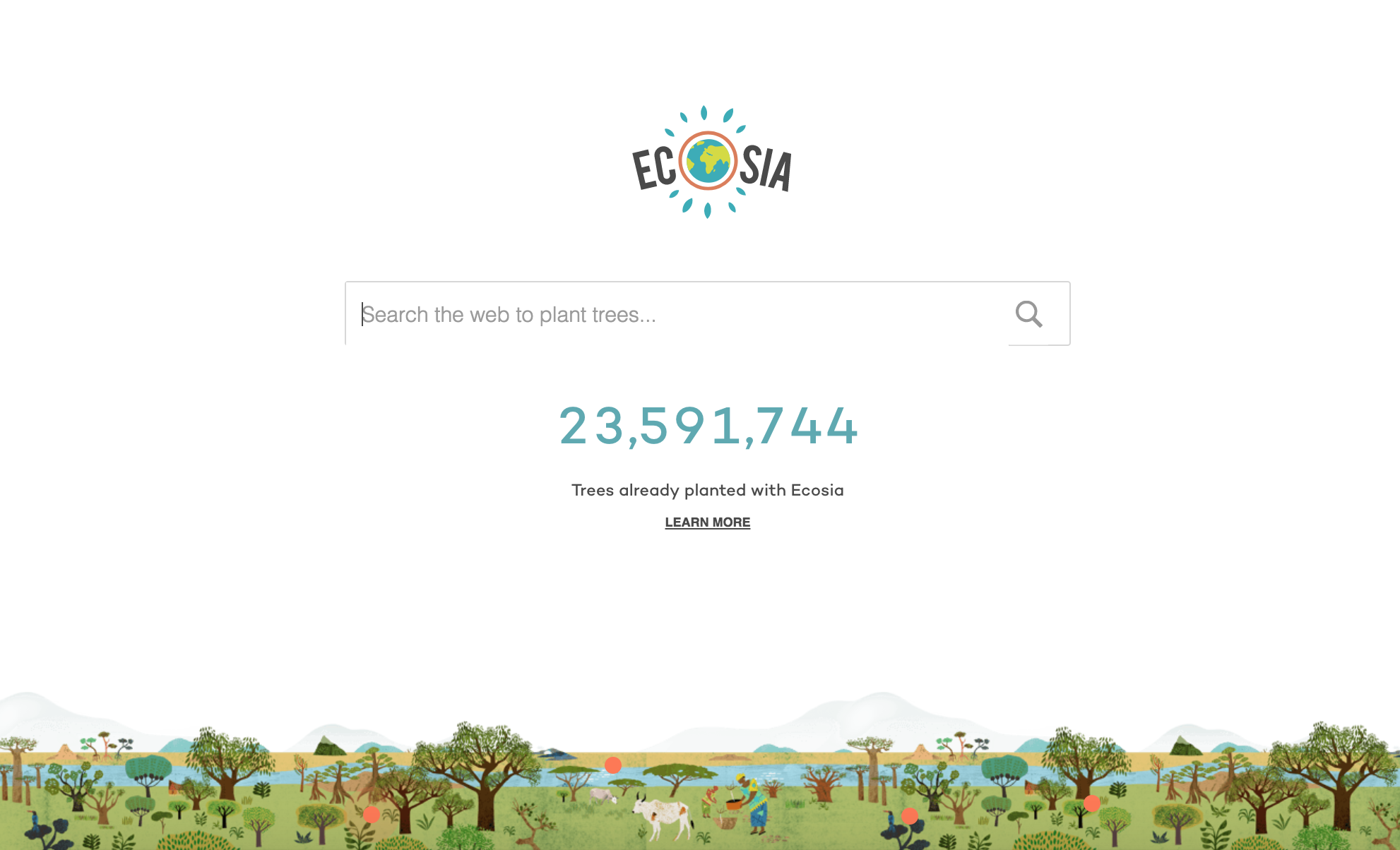
The German search engine currently has two main sources of income. Internet users who are searching for something or someone must set Ecosia as their default search engine. Image via Wikimedia Commons How does it work? This hill in this photo was apparently deforested in order to use its clay in civil construction in Barra da Tijuca, a borough in Rio de Janeiro. It also claims its web search is “completely” CO2 neutral.ĭeforestation of the Atlantic Forest in Rio de Janeiro, Brazil’s capital city. The goal, it seems, is to empower people to do some social good when using the internet to look for and buy stuff.Įcosia has partnered with the Nature Conservancy’s Plant A Billion Trees programme to help play its part in reforesting the Brazilian Atlantic Forest.Įcosia says a tree is planted every minute once a user switches to Ecosia as his or her default engine. It was founded four years ago.Įcosia has just given its search engine a revamp, and now wants to give users a ‘greener’ experience when using its search engine rather than opting for the usual search engine giants, such as Google. This is a German social business owned by Christian Kroll. Its search-engine results are mainly powered by Yahoo!Įcosia comes under the wing of Berlin-based Ecosia GmbH. Enter Ecosia, a German-based search engine that apparently donates 80pc of its income to a tree-planting programme in Brazil.

Ed concludes: “ I feel the collaboration has arrived at an outcome that bridges age gaps – that is enticing and entertaining whoever or wherever you are.Imagine doing an internet search and not only would you find what you are looking for, but a tree would also be planted as a result. 2D assets take on what the animation studio calls an “earthy quality” to create “an exciting contrast against the 3D”.Įd Barrett, Animade executive creative director, explains that Ecosia turned to the medium of animation for multiple reasons to communicate its narrative “clearly and concisely” and “entice a younger audience to the platform”. Texturally, Animade subtly departs from Koto’s clean linework too. Frida adds: “This blended form approach also allowed us to playfully explore how the different media could interact and enhance one another.”ĭespite the introduction of 3D, Animade were still keen to “avoid feeling too digital, and instead embraced a more hand-crafted feel through looser brushes and a soft grain”, says Frida. Flatter, hand-drawn 2D silhouettes are used for characters and trees elsewhere Animade introduces 3D backgrounds to “highlight the link between Ecosia users and the trees”.

“We wanted to use playful, silhouette-based system as a stepping stone to expand into a rich and expressive world where our characters could thrive,” says Frida. The minimal and “wonky” look Koto established for trees and other forms on the Ecosia rebrand is maintained by Animade, though with some stylistic additions. “The core objective of the campaign is to show just how easy it is to make a difference simply by using Ecosia, and we wanted to echo this message in the simplicity of the design,” says Frida. On 25 October, Ecosia launched the result, Start Growing Your Forest Today, a campaign that shows the daily impact of Ecosia, focusing on the link between tree planting and low-effort online searches.Īnimade shows a selection of short scenarios of people searching online via Ecosia, only for trees to spring up unexpectedly in response. Thus, “the Ecosia team were keen to see how could push the design further, into something totally unique,” Frida Ek, Animade creative director, tells us. The design overhaul, produced by Koto and rolled out this August, focused on the regenerative power of Ecosia. When Animade was bought on board to produce an animated social campaign for Ecosia – the search engine’s first – a rebrand was already underway at the Berlin company.


 0 kommentar(er)
0 kommentar(er)
